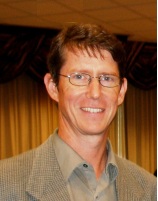Program Information
Multichannel CW Ultrasonic Thermometry for Imaging Therapeutic Dose Fields in Water
R Tosh1*, (1) NIST, Gaithersburg, MD
Presentations
MO-H-19A-4 Monday 5:15PM - 6:00PM Room: 19APurpose: To develop a scalable, multichannel ultrasonic thermometry system suitable for imaging clinical-beam dose distributions in a water phantom.
Method: A small, glass-walled rectangular water phantom (15 cm x 20 cm x 30 cm) was filled with distilled water, and two ultrasonic transducers were placed on the outside, against opposing walls, approximately 5 cm below the water line, and were aligned to optimize transmission/reception of ultrasound between them. Two synchronized lock-in amplifiers were connected to the transducers to enable full-duplex operation of two separate ultrasonic frequency channels configured to transmit simultaneously through the same volume of water and thereby provide independent measurements of the temperature-dependent ultrasonic phase lag. Controlled heating of the water via immersed power resistors provided a means to study dependence of measured phase lag on temperature change for both channels; cross-correlation of the phase outputs enabled much smaller temperature fluctuations in the phantom to be used to ascertain the noise floor and achievable temperature resolution.
Results: Temperature measurements from both channels, converted from phase measurements via polynomials available in the literature, exhibited the expected linear dependence of ultrasonic phase on temperature change (measured via calibrated thermistor probe). Cross-correlation analysis of phase fluctuations yielded rms noise estimates of approximately 1-2 microKelvin, comparable to that observed in standard water calorimeters.
Conclusion: Phase-sensitive detection of cw ultrasound has been shown to provide temperature sensitivity needed for calorimetry of external treatment beams, and the present simple demonstration establishes that multiple channels may be run simultaneously without phase disturbances that currently affect time-of-flight techniques utilizing phase-detection. Immediate plans include doubling the number of sensors, to enable a simple tomographic reconstruction, and to test the system in Clinac x-rays and electron beams.
Contact Email:


